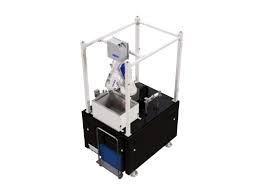In the realm of robotics and automation, the ability to perceive and interact with the environment is paramount. Without robust vision systems, robots remain blind, incapable of making informed decisions, and effectively executing tasks. In recent years, the development of 3D vision systems has taken center stage in the quest to bridge this gap, and among them, the HV-P 3D Vision System has emerged as a groundbreaking innovation. In this comprehensive exploration, we delve into the world of HV-P 3D Vision, its principles, applications, and its transformative impact on industries ranging from manufacturing to healthcare. Alibaba.com
Understanding HV-P 3D Vision
HV-P, or High-Volume Pattern Projection, represents a technological milestone in the evolution of 3D vision systems. It combines advanced hardware components and sophisticated software algorithms to enable robots and machines to perceive their surroundings with unprecedented precision. The fundamental principle behind HV-P 3D Vision is the projection of structured light patterns onto objects or scenes and then capturing the reflections using high-resolution cameras. The system meticulously analyzes the deformation of these patterns to construct detailed 3D models, providing an accurate representation of the environment.
Key Components of HV-P 3D Vision
- Projectors: HV-P systems rely on high-quality projectors capable of projecting intricate light patterns. These projectors are designed to emit structured light with precise calibration to ensure accurate depth perception.
- Cameras: High-resolution cameras equipped with advanced sensors are an integral part of HV-P 3D Vision. These cameras capture the reflected light patterns and provide the raw data necessary for 3D reconstruction.
- Computer Algorithms: The true power of HV-P lies in its sophisticated algorithms. These algorithms process the captured images to extract depth information, create 3D point clouds, and generate highly detailed models of the environment.
- Calibration Tools: Accurate calibration is crucial for HV-P systems. Specialized tools and techniques are used to align projectors and cameras precisely, ensuring reliable depth measurements.
Applications of HV-P 3D Vision
The versatility of HV-P 3D Vision system has opened up a multitude of applications across various industries:
- Manufacturing and Quality Control: HV-P systems are extensively used in manufacturing environments to inspect and measure parts with high precision. They enable quality control processes by detecting defects and ensuring that products meet strict specifications.
- Robotics and Automation: Robots equipped with HV-P 3D Vision can navigate complex environments, grasp objects, and perform tasks with dexterity. They find applications in logistics, material handling, and even healthcare, where they assist in surgeries.
- Healthcare: In the medical field, HV-P 3D Vision has transformed surgical procedures. Surgeons can now perform minimally invasive surgeries with unprecedented accuracy, thanks to real-time 3D visualization.
- Autonomous Vehicles: The automotive industry benefits from HV-P systems by enhancing the perception capabilities of autonomous vehicles. These systems help vehicles detect obstacles, pedestrians, and other vehicles on the road, contributing to safer autonomous driving.
- Archaeology and Cultural Heritage Preservation: HV-P 3D Vision aids archaeologists and conservators in digitizing and preserving cultural artifacts and historical sites. It allows for the creation of high-resolution 3D models for documentation and analysis.
- Agriculture: In precision agriculture, HV-P systems assist in crop monitoring, yield estimation, and disease detection by providing detailed 3D information about the fields and crops.
Impact and Advantages of HV-P 3D Vision
The adoption of HV-P 3D Vision has brought about significant advancements in various industries, offering numerous advantages:
- Precision and Accuracy: HV-P systems provide unparalleled accuracy and precision in 3D modeling and object recognition, reducing errors and improving the quality of output.
- Efficiency and Automation: By automating tasks that previously required human intervention, HV-P systems enhance efficiency and reduce labor costs in manufacturing and other industries.
- Safety: In healthcare and automotive applications, HV-P 3D Vision contributes to improved safety by helping robots and autonomous systems make better decisions based on real-time 3D data.
- Cost Savings: The increased efficiency and reduced error rates translate to cost savings for businesses in terms of materials, labor, and rework.
- Innovation: HV-P 3D Vision continues to drive innovation across industries, enabling the development of new applications and capabilities that were once thought impossible.
Challenges and Future Developments
While HV-P 3D Vision has made significant strides, it is not without challenges:
- Cost: Implementing HV-P systems can be expensive, limiting their adoption in some industries.
- Environmental Factors: Changes in lighting conditions or reflective surfaces can affect the performance of HV-P systems, necessitating adaptive solutions.
- Data Processing: The immense amount of data generated by HV-P systems requires powerful computing resources, which can be a bottleneck for real-time applications.
As technology advances, these challenges are expected to be addressed. Future developments may include more cost-effective hardware, improved algorithms for robust performance in various conditions, and increased integration with artificial intelligence for enhanced decision-making.
Conclusion
The HV-P 3D Vision System stands as a testament to the relentless pursuit of innovation in the fields of robotics and automation. With its ability to provide precise, real-time 3D perception, it has revolutionized industries ranging from manufacturing to healthcare, driving efficiency, safety, and cost savings. As the technology continues to evolve, the future holds promise for even more remarkable applications and the further integration of HV-P 3D Vision into our daily lives. This groundbreaking technology is shaping the way we interact with the world, ushering in an era of unprecedented precision and automation. Visit official website qviro.com

